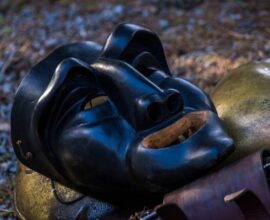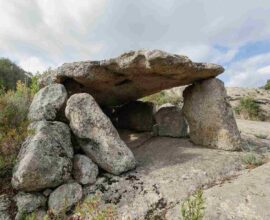Is Zuddas: discovering the Dolomite caves from millions of years ago
Is Zuddas: an extraordinary natural masterpiece
The natural heritage defining the extraordinary landscapes of ancient Ichnussa has made Sardinia famous all over the world for its splendor. Among the many natural treasures of the island, an important place is the cave of Is Zuddas.
The cave of Is Zuddas is in the southwestern part of the island, in the territory of Santadi municipality in the Lower Sulcis, southwest of Cagliari, from which it is about 60 km.
An underground kingdom created by the continuous action of water inside Mount Meana, consisting of Dolomite rocks dating back to 530 million years ago, formed by a unique and complex network of karst cavities.
Is Zuddas has several rooms, resembling hypogeal cathedrals connected by tunnels distinguishable from one another by their size and different types of beautiful and impressive concretions. Inside the cave, one can admire stalactites with tubular formation flows, canulae, and the rare needle-like aragonites covering the walls.
Aragonite is a material made of neutral calcium carbonate (Caco3) and belongs to a group of carbonate minerals called the “aragonite group”. This mineral takes part in the process of dolomitization which inside the cave of Is Zuddas presents itself in two forms: acicular aragonites and eccentric aragonites.
The first, nicknamed cave flowers by the speleologists, are large tufts of crystals reminiscent of needles. The eccentric aragonites, on the other hand, are filiform formations that develop in every direction and almost look like crazy wires, indifferent to the force of gravity and creating very original shapes. This second type of aragonite is mainly in the Eccentric Room, covering the vault and the walls of the cave.
The Chamber of Eccentrics marks the point of arrival of the cave visit lasting about an hour. Let’s see together what other wonders one can see in this beautiful and evocative treasure of Sardinia.
Is Zuddas: the path through the rooms of the cave
At the end of the sixties, the Is Zuddas cave was used as a quarry for the extraction of alabaster limestone, but the intervention by experts of the Speleo Club Santadese at beginning of the following decade brought to the closure and control of the cavity.
In 1985 the cave was finally re-opened to the public after working on the 500 m tourist route.
The cave has a constant temperature of 16 degrees with a humidity rate close to 100%. At the beginning of the cavity, one can observe the skeletal remains of Prolagus sardus, or the Sardinian pika, a Lagomorpha of the size of a hare, present only in Sardinia and Corsica and was extinct about 400 years ago.
The main entrance of Is Zuddas is the one created artificially by the quarrymen in 1968, while the small opening that constitutes the natural entrance was walled for safety.
After walking a few meters inside, one can observe the remains of the Sardinian pika on the ceiling and then proceed to the first room of the cave, where the disruption caused by the explosives used for extracting marble is still visible.
Here one can admire the imposing concretions, stalactites, stalagmites, and the magnificent floor consisting of a single large casting where a man-made staircase leads to a stalactite formation in the shape of a jellyfish.
After about ten meters, there is a room of medium size almost completely absent of concretions, in which one can observe accumulations of clay. Walking along the path, before entering a natural conduit, there is a fracture about 20 m heigh that corresponds to the passage discovered by speleologists in 1971.
The 30 m long duct leads to the magnificent Organ Hall named after the presence of a stalactite-stalagmite column recalling the typical pipe musical instrument. At the base of the column, there are coral-type formations, while on the right, there are ruined formations caused by phenomena related to recent volcanic activity.
Here one can observe the tubular shaped stalactites called speleological spaghetti, formations of acicular aragonites, needle-shaped ones with color variants from white to light gray, and the largest karst of the cave, about 60 meters tall.
Every year a crib is set up in the Organ Room with trachyte sculptures created by the Sardinian artist Giovanni Salidu.
A short tunnel leads to the majestic Theatre Hall discovered in 1971, full of stalagmites and colorful Karsts. On the left side of the room is a well-shaped tunnel, about 20 m deep, which ends in the only cavity with groundwater.
Near the Organ Room, there is the Eccentric Room, a magical place where the concretions of eccentric aragonite cover both the vault and the walls, giving the environment a fairy-tale atmosphere that leaves you breathless.
Do you want to discover the caves of Is Zuddas and live a dream-like holiday in a real paradise? Discover Forte Village Resort in Sardinia.






